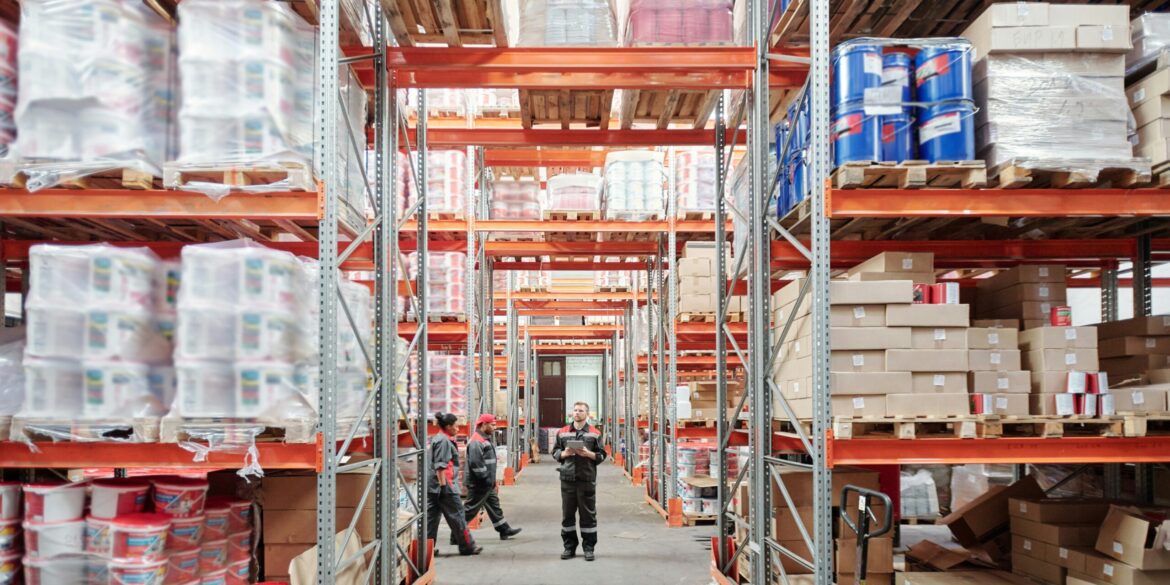The U.S. industrial real estate market is experiencing an unprecedented boom, fueled primarily by the relentless growth of e-commerce and evolving supply chain strategies that have reshaped global commerce. The first quarter 2025 report from CBRE, one of the world’s leading commercial real estate services firms, underscores this trend with industrial property vacancy rates plunging to just under 4%—the tightest market conditions the sector has seen in more than a decade.
E-Commerce Giants Lead Warehouse Expansion
At the heart of this surge is the continued expansion of e-commerce giants, who require vast networks of strategically located warehouses and distribution centers to meet escalating consumer demands for faster delivery times. Amazon, the largest online retailer in the U.S., recently announced plans to open five new fulfillment centers across key Midwestern and Southeastern markets, including Indianapolis, Atlanta, and Charlotte. These centers will support next-day and same-day delivery services, underscoring the growing consumer expectation for speed and convenience.
The scale of Amazon’s expansion is significant. According to the company’s 2025 annual report, these new centers will add over 10 million square feet of warehouse space, creating thousands of new jobs and further anchoring regional logistics hubs.
Other retail and logistics companies are matching this pace. Walmart, for instance, has committed over $3 billion to upgrade its supply chain infrastructure nationwide. FedEx recently unveiled a $2.5 billion investment in automated sorting and fulfillment technologies, reinforcing the critical role of third-party logistics (3PL) providers in this booming ecosystem.
Construction Innovations and Sustainability
The explosion of industrial property demand has triggered a robust construction pipeline. To accelerate delivery timelines amid labor shortages and escalating material costs, developers are increasingly adopting modular and prefabricated building techniques. These methods allow faster assembly while maintaining quality, which is essential in a sector where timing directly affects retailer competitiveness.
Sustainability is also playing a growing role. Tenants and investors alike are demanding green building features, including solar panel installations, energy-efficient HVAC systems, and sustainable water management practices. The Industrial Asset Management Council’s 2024 sustainability survey found that 78% of industrial tenants now prioritize eco-friendly facilities when selecting space.
For example, Prologis, a global industrial real estate giant, recently completed its first net-zero energy warehouse in the Los Angeles Inland Empire, equipped with solar arrays and battery storage systems. This development is part of a broader industry push toward carbon neutrality.
Location: The Lifeblood of Industrial Demand
Site selection remains a critical factor driving the industrial market’s dynamics. Demand clusters near major transportation arteries—ports, highways, and rail terminals—which facilitate the efficient movement of goods.
The ports of Los Angeles and Long Beach continue to be focal points for warehouse development due to their critical roles in U.S. international trade. These adjacent ports handled over 17 million TEUs (twenty-foot equivalent units) in 2024, maintaining their status as the nation’s busiest maritime gateway.
Developers are capitalizing on this proximity, with warehouse projects sprouting across the Inland Empire and Southern California’s logistics corridors. Inland Empire industrial vacancy rates have dipped below 3%, indicating acute demand pressure.
Similarly, East Coast markets like Savannah, Georgia, and the New Jersey/New York port area are witnessing surging industrial leasing, tied to expanding import volumes and distribution needs.
Challenges: Costs and Labor Constraints
Despite strong demand, the sector faces notable challenges. Construction inflation remains a persistent issue, with material prices—particularly for steel, lumber, and concrete—rising over 12% since 2023, according to the Associated General Contractors of America. Labor shortages are equally pressing; the industrial construction sector reported a 15% decrease in skilled labor availability nationwide, slowing project completions.
To address these bottlenecks, public and private stakeholders are collaborating on several fronts. Municipalities are streamlining zoning and permitting processes to expedite development. Workforce training programs funded through partnerships between developers, unions, and community colleges aim to replenish the skilled labor pool.
For instance, the California Workforce Development Board has invested $50 million in training initiatives targeting construction and logistics skills to meet industry demand.
Investor Confidence and Market Outlook
The strong fundamentals underpinning industrial real estate have sustained investor confidence. CBRE forecasts industrial rental rates will increase by approximately 7% through the end of 2025, driven by the persistent supply-demand imbalance.
Institutional investors are aggressively allocating capital to industrial assets, drawn by stable cash flows and the long-term leases typical of this sector. Blackstone and Prologis continue to lead in acquisitions, with notable deals including Blackstone’s $2 billion purchase of industrial properties across the Sun Belt in early 2025.
Broader Economic Implications
The industrial real estate boom reflects broader shifts in consumer behavior and global supply chains. The accelerated adoption of e-commerce, combined with the need for supply chain resilience post-pandemic, has permanently increased demand for modern logistics infrastructure.
Economists emphasize that industrial properties are now a critical economic driver, supporting job creation in warehousing, transportation, and last-mile delivery. According to the U.S. Bureau of Labor Statistics, employment in warehouse and distribution centers grew by 8% between 2022 and 2024, outpacing many other sectors.

